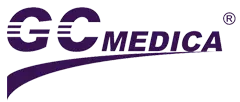-
Laparoscopic & Endoscopic Products
-
Laparoscopic Procedures
- Heated Insufflation Tube
- Laparoscopic Smoke Filter
- High FLow CO2 Laparoscopic Insufflation Filter Tube Set
- Veress Needle
- High Flow Heated Insufflation Tube
- Arthroscopy Irrigation Set
- Disposable Bladeless / Bladed Trocar with Thread / Balloon
- Disposable Wound Protector
- Disposable Height Changeable Wound Protector
- Retrieval Bag
- Laparoscopic Suction Irrigation Set
- Laparoscopic Insufflator
- Endoscopy Care and Accessories
-
Laparoscopic Procedures
- Respiratory & Anesthesia
- Cardiothoracic Surgery
- Gynaecology
-
Urology
- CathVantage™ Portable Hydrophilic Intermittent Catheter
-
Cysto/Bladder Irrigation Set
- M-easy Bladder Irrigation Set
- B-cylind Bladder Irrigation Set
- S-tur Bladder Irrigation Set
- S-uni Bladder Irrigation Set
- B-uro Bladder Irrigation Set
- Premi Bladder Irrigation Set
- J-pump Bladder Irrigation Set
- J-tur Bladder Irrigation Set
- H-pump Bladder Irrigation Set
- Sup-flow Bladder Irrigation Set
- Maple Irrigation Set
- Peony Irrigation Set
- Nelaton Catheter
- Urinary Drainage Bag
- Urinary Drainage Leg Bag
- Enema Kits
- Sitz Bath Kits
- Click Seal Specimen Container
- Silicone Male Catheter
- Spigot Catheter and Adaptor
- Sandalwood Irrigation Set
- Freesia Irrigation Set
- Daffodil Irrigation Set
- Single-Use Digital Flexible Ureteroscope
- Enteral Feeding Products
- Dental
- Fluid Management
- Warming Unit and Warming Blanket
-
Operating Room Necessities
- Nasal and Oral Sucker
- Disposable Medical Equipment Covers
- Magnetic Drape / Magnetic Instrument Mat
- Suction Handle
-
General Surgery
- Perfusion Atomizer System
- Gastric Sump Tube
- Surgical Hand Immobilizer / Lead Hand for Surgery
- Administration Set for Blood
- Ear/Ulcer Syringe
- Bulb Irrigation Syringe
- Toomey Irrigation Syringe
- Mixing Cannula
- Basin Liner/Basin Drape
- Medical Brush
- Sponge Stick
- Suture Retriever
- Needle Counter
- Disposable Calibration Tube
- Heparin Cap
- 100ML Bulb Irrigation Syringe
- Scleral Marker
- Surgical Light Handle
- Mucosal Atomization Device
- Durable Medical Equipment
- Patient Handling System
- PVC-FREE Medical Device
- Emergency
-
Patient Air Transfer Mattress Online WholesaleDec 17 , 2024
-
Cystoscopy Irrigation Set Online Wholesale | GCMEDICADec 17 , 2024
-
Patient Warming Device and Blanket Online wholesaleDec 16 , 2024
-
CathVantage™ Twist Intermittent Catheter | GCMEDICASep 20 , 2024
-
Single-Use Digital Flexible Ureteroscope | GCMEDICASep 20 , 2024
What is the Difference Between Nasal Ett Tube Oxygen Inhalation and Mask Oxygen Inhalation?
Oxygen is very important to the human body. Under normal conditions, healthy people naturally breathe air and use the oxygen in it to maintain metabolic needs. When sick or in some abnormal state, it is necessary to inhale oxygen through certain equipment at home, clinics, and hospitals. For people with breathing difficulties, it is necessary to relieve symptoms through oxygen inhalation, especially for the elderly because many diseases require oxygen inhalation. For oxygen inhalation, prong nasal inhalation and mask inhalation of oxygen can be used. Then let's learn about prong nasal inhalation. What is the difference between oxygen and mask oxygen?
1. Mask oxygen inhalation method
It can be divided into open and closed mask method. The open type is to place the mask at a distance of 1 to 3 cm from the patient's mouth and nose, which is suitable for children without any discomfort. The closed mask method is to tightly cover the mask on the nose and mouth and fix it with an elastic band. It is suitable for people with severe hypoxia. The oxygen inhalation concentration can reach 40% to 50%, and it feels more comfortable, without mucosal irritation and dry feeling. However, the oxygen consumption is large, and there are disadvantages of inconvenience in eating and expectoration.
2. Prong nasal oxygen inhalation
The prong nasal method is to insert a catheter (usually a urinary catheter) through the nostrils into the back of the soft palate at the top of the nasal cavity. The oxygen concentration is constant, but it will feel uncomfortable and easily blocked by secretions after a long time. Nasal congestion and prong nasal oxygen inhalation methods are generally only suitable for low-flow oxygen supply. If the flow rate is relatively large, it will be unbearable due to the large flow rate and impact force, and it will easily lead to drying of the airway mucosa.
3. The difference between prong nasal oxygen inhalation and mask oxygen inhalation
Mask oxygen patients are prone to carbon dioxide retention, because the exhaled carbon dioxide is inhaled after accumulation in the mask. Prong nasal inhalation of oxygen loses a lot of oxygen. Mask oxygen inhalation patients are suitable for patients with low blood oxygen saturation, patients with hypoxemia with hypercapnia, patients with COPD and patients with chronic pulmonary heart disease.
Indications for nasal ett tube patients:
① Respiratory system diseases affect lung capacity.
② Heart insufficiency, making the lungs congested and causing breathing difficulties.
③ Poisoning, so that oxygen can not penetrate into the tissue by capillaries and produce hypoxia.
④ Coma patients, such as cerebrovascular accident.
⑤ Some patients after surgery, patients with hemorrhagic shock or craniocerebral disease, irregular long labor or poor fetal heart rate, etc.
Now everyone can clearly understand the difference between these two methods of oxygen inhalation. In fact, for patients, when the general symptoms are not particularly serious, more people use masks to inhale oxygen, and the concentration of oxygen inhalation also needs to be based on the doctor's Do not arbitrarily change the doctor's order for mediation.

